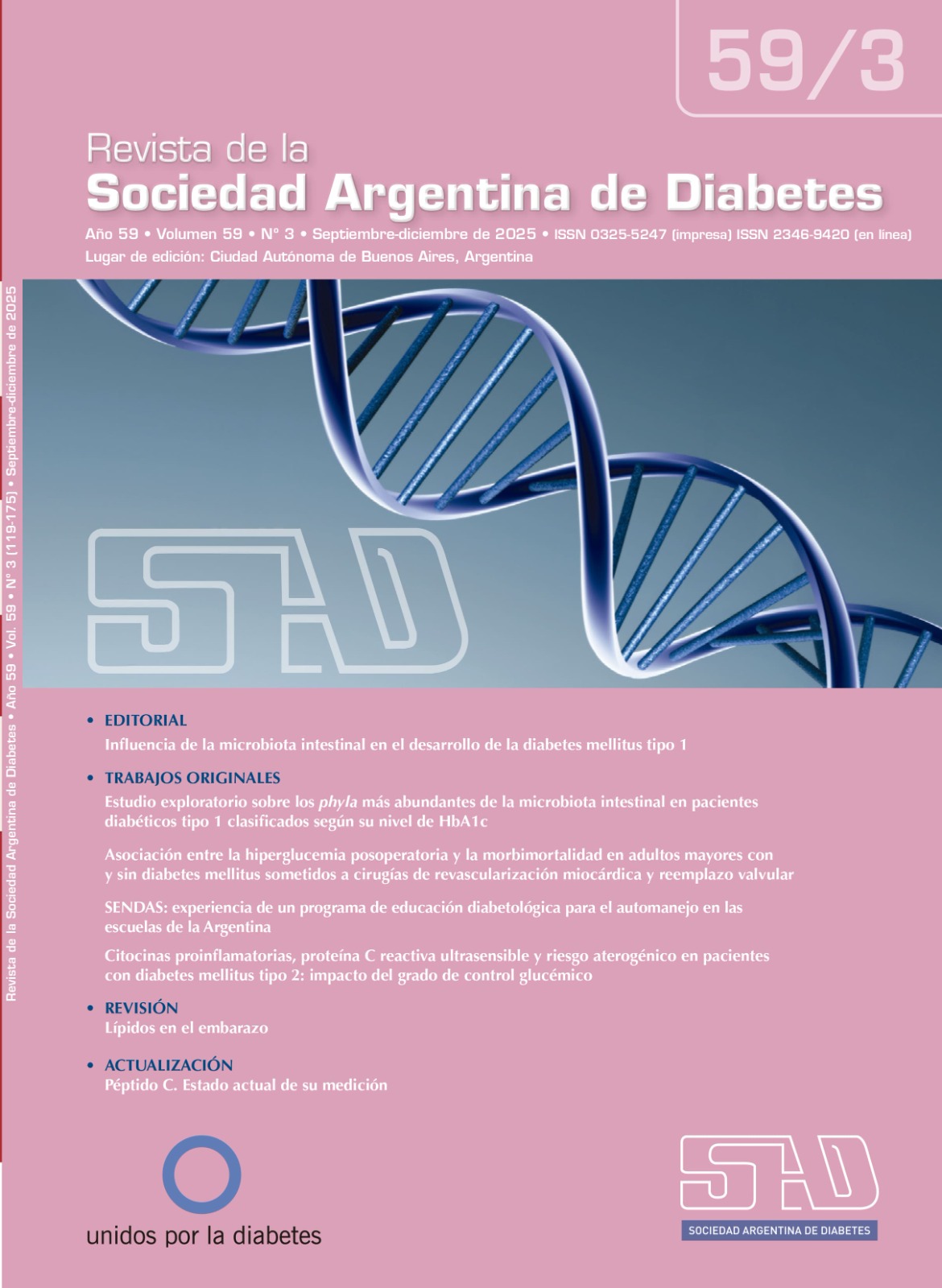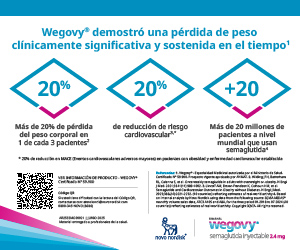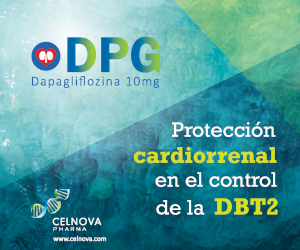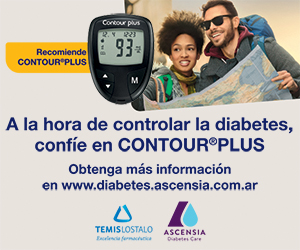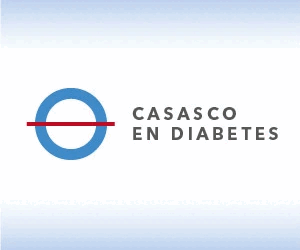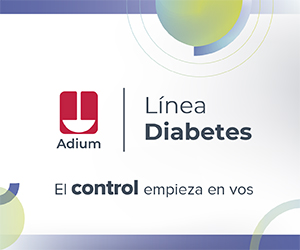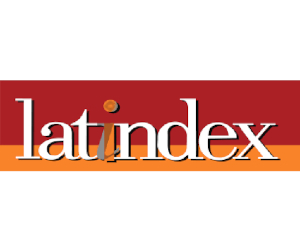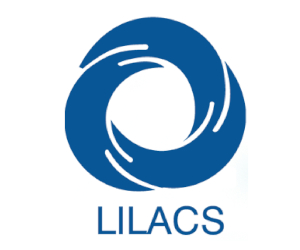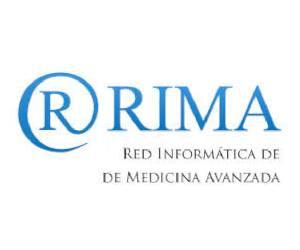Proinflammatory cytokines, ultrasensitive C-reactive protein and atherogenic risk in patients with type 2 diabetes: impact of the degree of glycemic control
DOI:
https://doi.org/10.47196/diab.v59i3.1289Keywords:
type 2 diabetes, IL-6, TNF-α, cardiovascular risk, glycated hemoglobinAbstract
Introduction: type 2 diabetes is characterized by a chronic proinflammatory state associated with metabolic and cardiovascular complications.
Objectives: to determine the concentrations of interleukin-6 (IL-6), tumor necrosis factor-alpha (TNF-α), ultrasensitive C-reactive protein (hs-CRP) and plasma atherogenic index (PAI), and to analyze their association with glycosylated hemoglobin (HbA1c) levels in patients with type 2 diabetes mellitus (DM2).
Material and methods: an observational, cross-sectional, correlational study was conducted in 300 participants (240 diagnosed with T2DM and 60 healthy controls). Patients with T2DM were classified into three groups according to their HbA1c levels: group 1 (<7%), group 2 (7-9%), and group 3 (>9%). Biochemical, inflammatory, and anthropometric parameters were assessed. Statistical analysis included ANOVA, Pearson classification, and multivariate logistic regression.
Results: Patients with worse glycemic control (HbA1c >9%) showed significantly higher levels of glucose, body mass index, triglycerides, PAI, IL-6, TNF-α and hs-CRP (p<0.05). A positive correlation was identified between HbA1c levels and inflammatory and atherogenic biomarkers: IL-6 (r=0.5539; p<0.0001), TNF-α (r=0.1769; p<0.0001), hs-CRP (r=0.3535; p<0.0001) and PAI (r=0.2416; p<0.0001). In the multivariate analysis, hs-CRP and PAI behaved as independent predictors of poor glycemic control.
Conclusions: Poor glycemic control in DM2 is associated with an adverse immunometabolic profile. Elevated proinflammatory cytokines, hs-CRP and plasma atherogenic index suggest increased cardiovascular risk. Incorporating these markers into clinical practice may strengthen the comprehensive assessment of the patient and guide more effective therapeutic decisions.
References
I. Ma CX, Ma XN, Guan CH, Li YD, Mauricio D, Fu SB. Cardiovascular disease in type 2 diabetes mellitus: progress toward personalized management. Cardiovasc Diabetol 2022 May 14;21(1):74.
II. American Diabetes Association. Professional Practice Committee. 2. Diagnosis and Classification of Diabetes: Standards of Care in Diabetes 2024. Diabetes Care 2024; 47(Suppl 1):S20-S42.
III. American Diabetes Association. 10. Cardiovascular disease and risk management. Standards of Medical Care in Diabetes 2019. Diabetes Care 2019;42(Suppl 1):S103-S123.
IV. Liu R, Li L, Shao C, Cai H, Wang Z. The impact of diabetes on vascular disease. Progress from the perspective of epidemics and treatments. Journal of diabetes research, 2022;1531289.
V. Henning RJ. Type-2 diabetes mellitus and cardiovascular disease. Future Cardiol 2018 Nov;14(6):491-509.
VI. Rohm TV, Meier DT, Olefsky JM, Donath MY. Inflammation in obesity, diabetes, and related disorders. Immunity 2022;55(1):31-55.
VII. Qin Z, Zhou K, Li Y, Cheng W, Wang Z, Wang J, Gao F, Yang L, Xu Y, Wu Y, He H, Zhou Y. The atherogenic index of plasma plays an important role in predicting the prognosis of type 2 diabetic subjects undergoing percutaneous coronary intervention: results from an observational cohort study in China. Cardiovasc Diabetol. 2020 Feb 21;19(1):23.
VIII. Ma X, Sun Y, Cheng Y, Shen H, Gao F, Qi J, Yang L, Wang Z, Shi D, Liu Y, Liu X, Zhou Y. Prognostic impact of the atherogenic index of plasma in type 2 diabetes mellitus patients with acute coronary syndrome undergoing percutaneous coronary intervention. Lipids Health Dis 2020 Nov 16;19(1):240.
IX. Li Z, Huang Q, Sun L, Bao T, Dai Z. Atherogenic index in type 2 diabetes and its relationship with chronic microvascular complications. Int J Endocrinol 2018 Nov 29;2018:1765835.
X. Aguirre-Villegas P, Pedreañez A. Could glycated hemoglobin be considered a marker of inflammation in patients with diabetes mellitus? Int J Med Surg Sci 2024 Aug. 26;11(2):1-13.
XI. Mitsios JP, Ekinci EI, Mitsios GP, Churilov L, Thijs V. Relationship between glycated hemoglobin and stroke risk. A systematic review and meta-analysis. J Am Heart Assoc 2018 May 17;7(11):e007858.
XII. Ministerio de Salud Pública del Ecuador. Nota informativa. Disponible en: https://www.salud.gob.ec/msp-recibe-aporte-de-la-sociedad-civil-para-el-abordaje-de-la-diabetes-en-ecuador/. (consultado mayo de 2025).
XIII. Shrestha B, Dunn L. The Declaration of Helsinki on medical research involving human subjects: a review of seventh revision. J Nepal Health Res Counc 2020 Jan 21;17(4):548-552.
XIV. Escalera J, Pérez L, Brito S, Lares M, Flores L, Castro J. Niveles séricos de interleucina-6 en pacientes con diabetes tipo 2 y su correlación con el perfil lipídico. Rev Digit Postgrado 2021;10(2):e309.
XV. Samuel VT, Shulman GI. The pathogenesis of insulin resistance: integrating signaling pathways and substrate flux. J Clin Invest. 2016 Jan;126(1):12-22.
XVI. Pérez-Galarza J, Baldeón L, Franco OH, Muka T, Drexhage HA, Voortman T, Freire WB. Prevalence of overweight and metabolic syndrome, and associated sociodemographic factors among adult Ecuadorian populations: the ENSANUT-ECU study. J Endocrinol Invest 2021 Jan;44(1):63-74.
XVII. Czech MP. Mechanisms of insulin resistance related to white, beige, and brown adipocytes. Mol Metab 2020 Apr;34:27-42.
XVIII. Ungurianu A, Zanfirescu A, Grădinaru D, Ionescu-Tîrgoviște C, Dănciulescu Miulescu R, Margină D. Interleukins and redox impairment in type 2 diabetes mellitus: mini-review and pilot study. Curr Med Res Opin 2022 Apr;38(4):511-522.
XIX. Weber KS, Nowotny B, Strassburger K, Pacini G, Müssig K, Szendroedi J, Herder C, Roden M; GDS Group. The role of markers of low-grade inflammation for the early time course of glycemic control, glucose disappearance rate, and β-cell function in recently diagnosed type 1 and type 2 diabetes. Diabetes Care 2015 Sep;38(9):1758-67.
XX. Poreba M, Rostoff P, Siniarski A, Mostowik M, Golebiowska-Wiatrak R, Nessler J, Undas A, Gajos G. Relationship between polyunsaturated fatty acid composition in serum phospholipids, systemic low-grade inflammation, and glycemic control in patients with type 2 diabetes and atherosclerotic cardiovascular disease. Cardiovasc Diabetol 2018 Feb 16;17(1):29.
XXI. de Baat A, Trinh B, Ellingsgaard H, Donath MY. Physiological role of cytokines in the regulation of mammalian metabolism. Trends Immunol 2023 Aug;44(8):613-627.
XXII. Akash MSH, Rehman K, Liaqat A. Tumor necrosis factor-alpha. Role in development of insulin resistance and pathogenesis of type 2 diabetes mellitus. J Cell Biochem 2018 Jan;119(1):105-110.
XXIII. Moshapa FT, Riches-Suman K, Palmer TM. Therapeutic targeting of the proinflammatory IL-6-JAK/STAT signalling pathways responsible for vascular restenosis in type 2 diabetes mellitus. Cardiol Res Pract 2019 Jan 2;2019:9846312.
XXIV. Berbudi A, Khairani S, Tjahjadi AI. Interplay between insulin resistance and immune dysregulation in type 2 diabetes mellitus. Implications for therapeutic interventions. Immunotargets Ther 2025 Apr 3;14:359-382.
XXV. Zhou HH, Tang YL, Xu TH, Cheng B. C-reactive protein: structure, function, regulation, and role in clinical diseases. Front Immunol 2024 Jun 14;15:1425168.
XXVI. Yang X, Tao S, Peng J, Zhao J, Li S, Wu N, Wen Y, Xue Q, Yang CX, Pan XF. High-sensitivity C-reactive protein and risk of type 2 diabetes. A nationwide cohort study and updated meta-analysis. Diabetes Metab Res Rev 2021 Nov;37(8):e3446.
XXVII. Tian R, Tian M, Wang L, Qian H, Zhang S, Pang H, Liu Z, Fang L, Shen Z. C-reactive protein for predicting cardiovascular and all-cause mortality in type 2 diabetic patients: A meta-analysis. Cytokine. 2019 May;117:59-64.
XXVIII. Pedreáñez A, Mosquera-Sulbarán J, Robalino J, Tene D, Muñóz N. Elevación del índice neutrófilo/linfocito y su relación con la proteína C reactiva en pacientes con diabetes mellitus tipo 2. Rev Soc Arg Diab 2021;55(3):77-83.
XXIX. Lioy B, Webb RJ, Amirabdollahian F. The association between the atherogenic index of plasma and cardiometabolic risk factors: a review. Healthcare (Basel). 2023 Mar 28;11(7):966.
XXX. Artha IMJR, Bhargah A, Dharmawan NK, Pande UW, Triyana KA, Mahariski PA, Yuwono J, Bhargah V, Prabawa IPY, Manuaba IBAP, Rina IK. High level of individual lipid profile and lipid ratio as a predictive marker of poor glycemic control in type-2 diabetes mellitus. Vasc Health Risk Manag. 2019 Jun 5;15:149-157.
XXXI. Bage IJ, Kamalanathan S, Selvarajan S, Sahoo J, Jayanthi M, Naik D. The association of dyslipidemia and atherogenic indices with glycemic control in diabetic dyslipidemia patients: a real-world landscape. Cureus. 2023 Sep 26;15(9):e45985.
Downloads
Published
Issue
Section
License
Copyright (c) 2025 on behalf of the authors. Reproduction rights: Argentine Society of Diabetes

This work is licensed under a Creative Commons Attribution-NonCommercial-NoDerivatives 4.0 International License.
Dirección Nacional de Derecho de Autor, Exp. N° 5.333.129. Instituto Nacional de la Propiedad Industrial, Marca «Revista de la Sociedad Argentina de Diabetes - Asociación Civil» N° de concesión 2.605.405 y N° de disposición 1.404/13.
La Revista de la SAD está licenciada bajo Licencia Creative Commons Atribución – No Comercial – Sin Obra Derivada 4.0 Internacional.
Por otra parte, la Revista SAD permite que los autores mantengan los derechos de autor sin restricciones.



